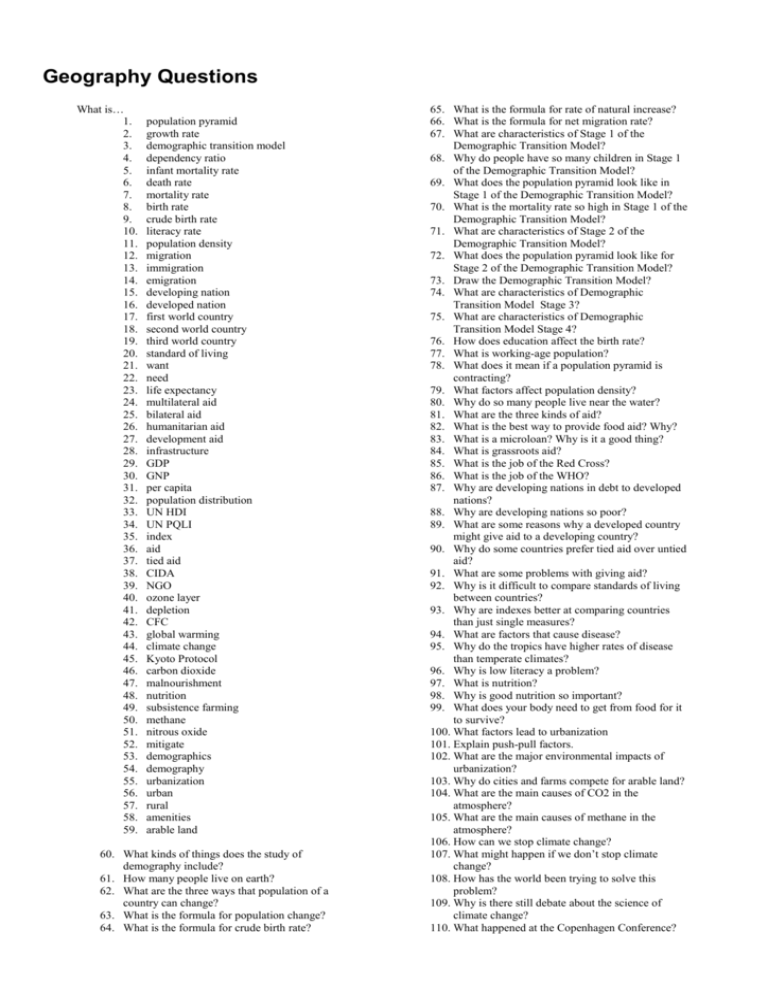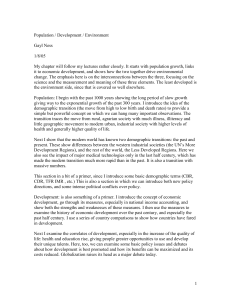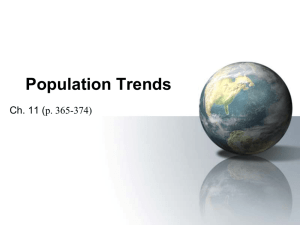Geography Questions - TTMLIS-SS11
advertisement

Geography Questions What is… 1. 2. 3. 4. 5. 6. 7. 8. 9. 10. 11. 12. 13. 14. 15. 16. 17. 18. 19. 20. 21. 22. 23. 24. 25. 26. 27. 28. 29. 30. 31. 32. 33. 34. 35. 36. 37. 38. 39. 40. 41. 42. 43. 44. 45. 46. 47. 48. 49. 50. 51. 52. 53. 54. 55. 56. 57. 58. 59. population pyramid growth rate demographic transition model dependency ratio infant mortality rate death rate mortality rate birth rate crude birth rate literacy rate population density migration immigration emigration developing nation developed nation first world country second world country third world country standard of living want need life expectancy multilateral aid bilateral aid humanitarian aid development aid infrastructure GDP GNP per capita population distribution UN HDI UN PQLI index aid tied aid CIDA NGO ozone layer depletion CFC global warming climate change Kyoto Protocol carbon dioxide malnourishment nutrition subsistence farming methane nitrous oxide mitigate demographics demography urbanization urban rural amenities arable land 60. What kinds of things does the study of demography include? 61. How many people live on earth? 62. What are the three ways that population of a country can change? 63. What is the formula for population change? 64. What is the formula for crude birth rate? 65. What is the formula for rate of natural increase? 66. What is the formula for net migration rate? 67. What are characteristics of Stage 1 of the Demographic Transition Model? 68. Why do people have so many children in Stage 1 of the Demographic Transition Model? 69. What does the population pyramid look like in Stage 1 of the Demographic Transition Model? 70. What is the mortality rate so high in Stage 1 of the Demographic Transition Model? 71. What are characteristics of Stage 2 of the Demographic Transition Model? 72. What does the population pyramid look like for Stage 2 of the Demographic Transition Model? 73. Draw the Demographic Transition Model? 74. What are characteristics of Demographic Transition Model Stage 3? 75. What are characteristics of Demographic Transition Model Stage 4? 76. How does education affect the birth rate? 77. What is working-age population? 78. What does it mean if a population pyramid is contracting? 79. What factors affect population density? 80. Why do so many people live near the water? 81. What are the three kinds of aid? 82. What is the best way to provide food aid? Why? 83. What is a microloan? Why is it a good thing? 84. What is grassroots aid? 85. What is the job of the Red Cross? 86. What is the job of the WHO? 87. Why are developing nations in debt to developed nations? 88. Why are developing nations so poor? 89. What are some reasons why a developed country might give aid to a developing country? 90. Why do some countries prefer tied aid over untied aid? 91. What are some problems with giving aid? 92. Why is it difficult to compare standards of living between countries? 93. Why are indexes better at comparing countries than just single measures? 94. What are factors that cause disease? 95. Why do the tropics have higher rates of disease than temperate climates? 96. Why is low literacy a problem? 97. What is nutrition? 98. Why is good nutrition so important? 99. What does your body need to get from food for it to survive? 100. What factors lead to urbanization 101. Explain push-pull factors. 102. What are the major environmental impacts of urbanization? 103. Why do cities and farms compete for arable land? 104. What are the main causes of CO2 in the atmosphere? 105. What are the main causes of methane in the atmosphere? 106. How can we stop climate change? 107. What might happen if we don’t stop climate change? 108. How has the world been trying to solve this problem? 109. Why is there still debate about the science of climate change? 110. What happened at the Copenhagen Conference?





